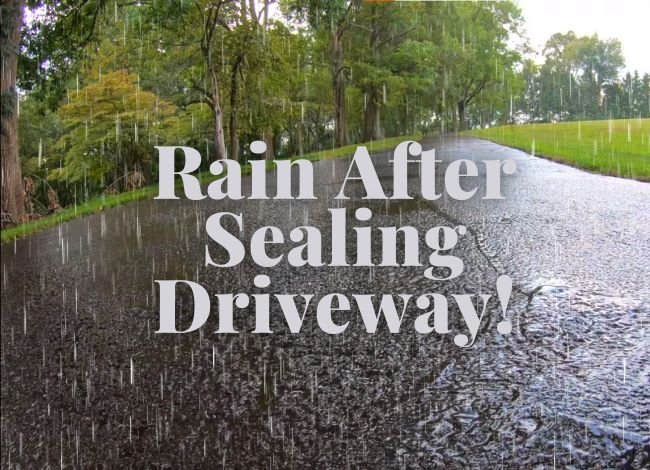Last Updated on April 21, 2025
Weather conditions play a crucial role when sealing a driveway. For optimal results, the surface must be completely dry—ideally for 4 to 8 hours—before any rain occurs. But what if it rains while you’re sealing the driveway? Unfortunately, rain during sealing can be quite damaging. Heavy rain may wash away the sealer and disrupt the curing process, leading to poor adhesion and reduced durability.
Is Rain Harmful While Sealing the Driveway?
Yes, rain—whether light or heavy—can negatively affect the driveway sealing process. Even light rain or mist can interfere with the curing process if the sealant hasn’t had enough time to dry. This moisture can cause blotchy or uneven finishes and reduce the overall effectiveness of the sealant.
In the case of a concrete driveway, heavy rainfall can disrupt the water-to-cement ratio, weakening the surface integrity. It can also wash away active sealing agents, leaving the driveway vulnerable to water damage, cracking, and surface erosion.
What’s the Best Season for Sealing a Driveway?
Sealing your driveway during summer or dry weather is highly recommended. Warm, sunny days ensure faster drying and proper curing of the sealer. If sealing during the rainy season is unavoidable, consider using artificial drying methods such as high-powered fans or blow dryers to speed up the process and protect the sealant from early rain exposure. Still, natural sunlight remains the best and most efficient drying method.
How Can I Apply Driveway Sealant in the Rainy Season?
Sealing a driveway during the rainy season requires careful planning and extra precautions. Rain can easily ruin your hard work if you’re not prepared. Below are essential steps and tips to help you apply driveway sealant even when the weather is unpredictable.
✅ Check the Weather Forecast
Before starting your driveway sealing project, always monitor the local weather forecast. This is crucial during the rainy season. Even if there’s only a 20% chance of rain, it’s safer to postpone the project to a day with zero precipitation expected. A single shower can wash away your freshly applied sealant and waste both time and money.
✅ Turn Off Sprinklers and Nearby Water Sources
Many homeowners forget to turn off their sprinkler systems, leading to accidental water exposure. Water from sprinklers can compromise the adhesion and curing of the sealant. Double-check that all irrigation systems and hoses are off before you begin sealing.
✅ Use a Protective Tent or Canopy
If rain starts unexpectedly during the sealing process, quickly cover the area using a waterproof tent or canopy. While this is not a long-term solution, it provides temporary protection to prevent immediate washout. Ensure the cover is tightly secured and elevated to avoid pooling water.
Frequently Asked Questions
How do I prepare my driveway before applying sealer?
Start by inspecting the surface for any cracks, holes, or oil stains. Clean the driveway thoroughly using a power washer or strong hose. Remove all dirt, debris, and vegetation, as these can prevent the sealer from bonding properly and lead to an uneven finish.
Can I speed up the drying process of driveway sealant?
The best way to dry a driveway sealant is through direct sunlight and warm temperatures. However, if rain is expected, you can use large industrial fans or a powerful leaf blower to accelerate the drying time. Make sure to avoid sealing too close to rain hours even with artificial drying, as full curing may still take 24–48 hours.
Is it okay to seal a driveway on a cloudy day?
Yes, as long as there is no rain forecasted for at least 24 hours after application. Overcast conditions may slow down the drying process slightly but won’t necessarily harm the sealant like rain would.

